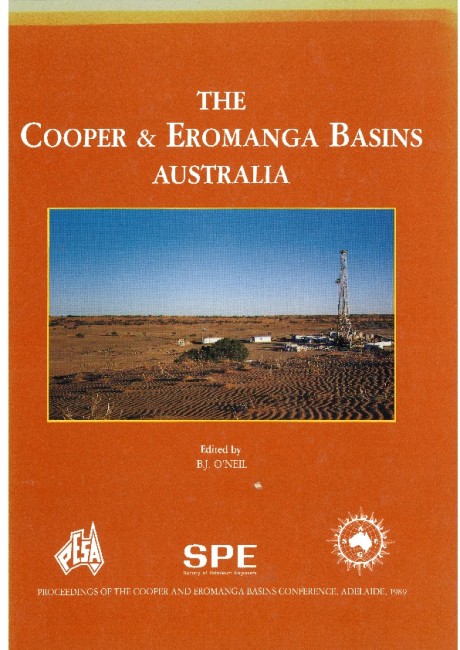Publication Name: The Cooper & Eromanga Basins Australia
Authors: J.P. Schulz-Rojahn and S.E. Phillips
Date Published: June 1989
Number of Pages: 31
Reference Type: Book Section
Abstract:
Preliminary results concerning the diagenesis of Permian reservoir sandstones in the Nappamerri Trough haveidentified several authigenic mineral phases. A variety of techniques, namely thin section description, scanning
electron microscopy, X-ray diffraction and cathodoluminescence have been used to characterise these minerals.
Euhedral prisms and rhombohedra of quartz overgrowths developed during several stages of diagenesis.
Possible sources of silica include meteoric waters, kaolinisation, clay transformation and chemical compaction. In some samples of the Toolachee Formation, authigenic quartz was introduced prior to compaction and
provided a rigid framework which partially preserves primary porosity.
Siderite is the dominant authigenic carbonate mineral. It has a variety of compositions and crystal habits indicative of the timing and mode of formation. Locally, siderite significantly reduces porosity and permeability.
Clay minerals of authigenic and detrital origin have varied effects on reservoir quality and potential. Kaolinite
formed due to the alteration ofK-feldspars and micas, and is the dominant kaolin mineral in finer grained clastics. Dickite precipitated from solution in coarser grained materials and is associated with high microporosity. Porosity and permeability are significantly reduced by detrital illite in fine grained flood plain and overbank deposits. Rare authigenic illite, clinochlore IIB and pyrophyllite concentrate in more deeply buried sediments. In particular, the pyrophyllite is considered to have formed under conditions of low grade metamorphism in the central Nappamerri Trough.
Although some primary porosity is preserved in the sandstones, the dissolution of labile components to form
oversized pores has been significant in certain areas.


